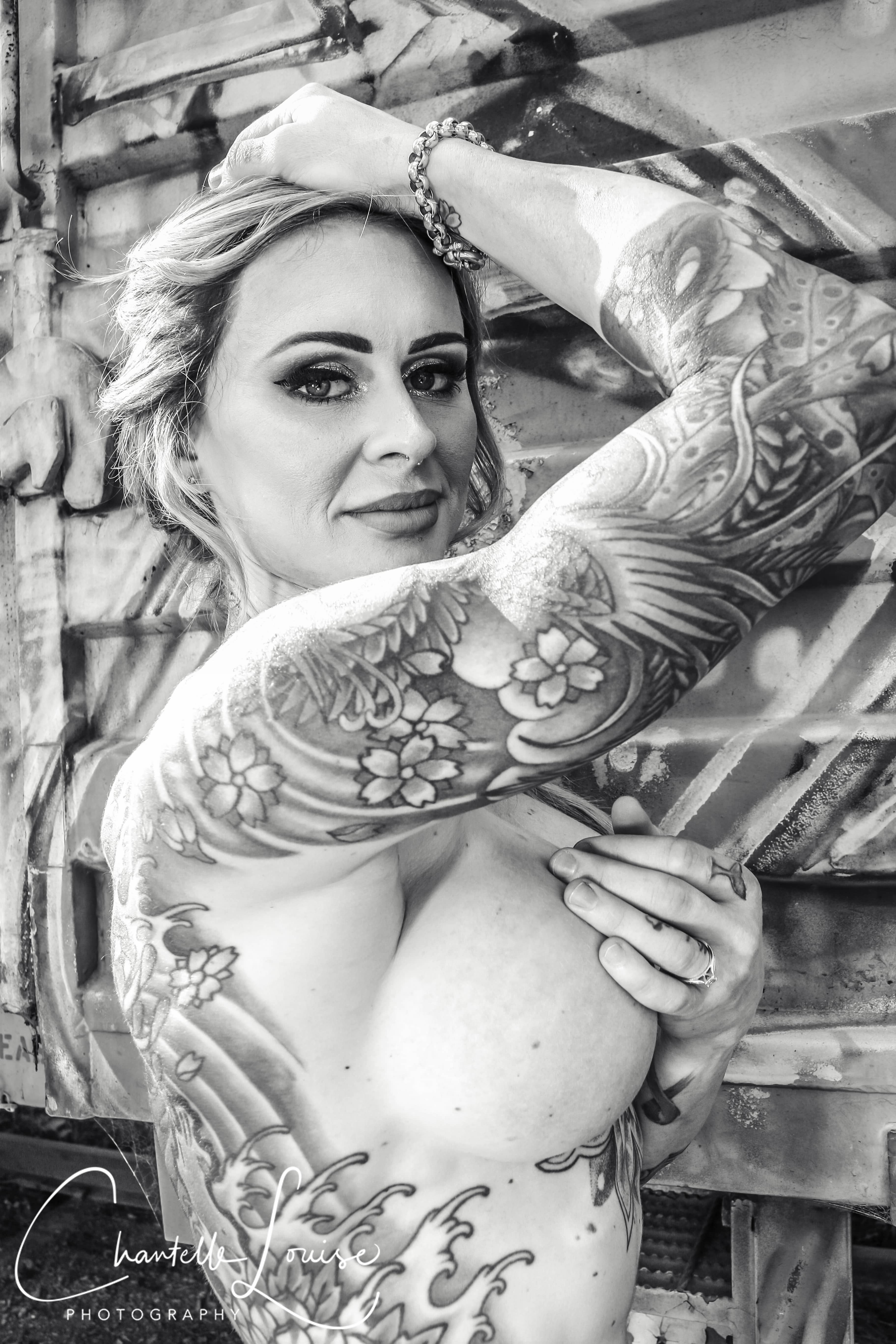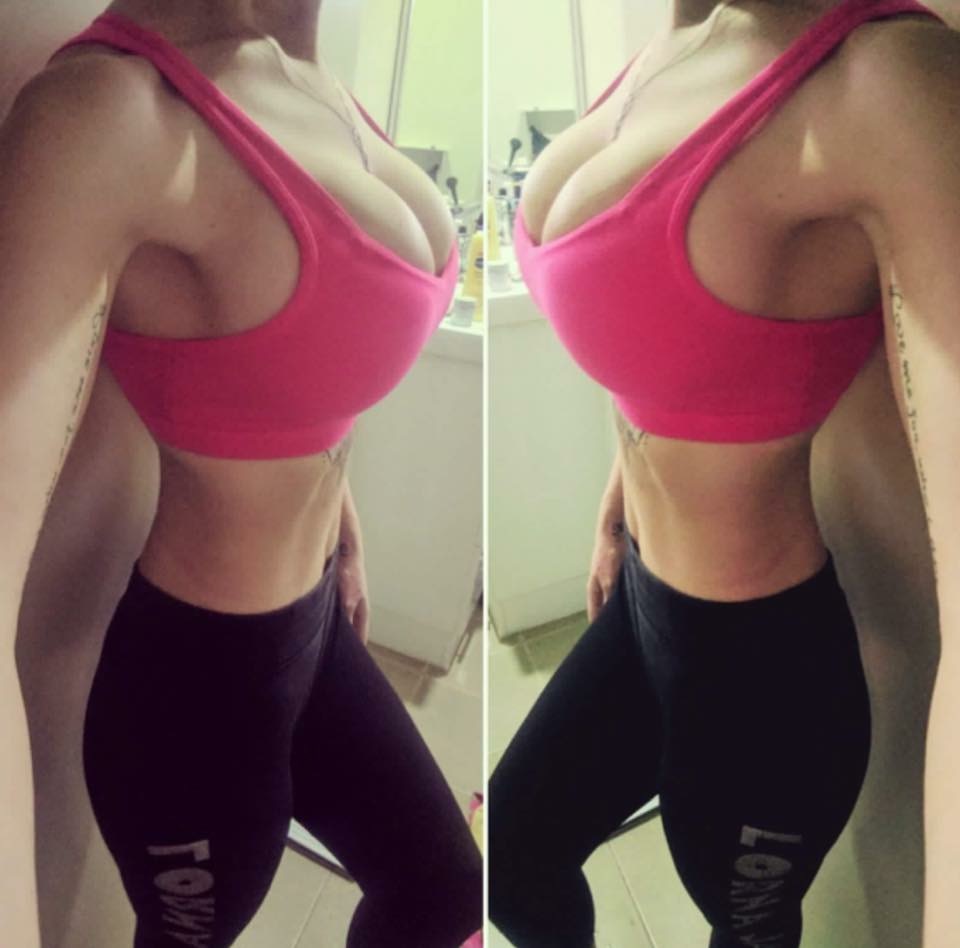Who are the best candidates for a Breast Augmentation Revision procedure?
In the eyes of Dr Hussain, the best candidates for breast augmentation revision are women who are looking for improvement, not perfection, in the way they look in regard to their current breast implants. If you’re physically healthy and realistic in your expectations, you might be a good candidate for a breast augmentation revision procedure.
Breast augmentation revision is to alter the size or placement of your existing breast implants. This can be done to achieve a smaller or larger size implant as well as to change the plane of your implant or its position on your chest. Breast revision surgery can also restore and enhance your breast volume if it has decreased as a result of pregnancy and breast-feeding. Alternatively, you may be a good candidate for a breast lift procedure.
What should I consider when planning my breast surgery?
In your initial consultation, Dr Ali Hussain will evaluate your health and explain which surgical techniques are most appropriate for you, based on the condition of your breasts and skin tone. If your breasts are saggy, you may be advised to have a breast lift either in conjunction with or instead of a breast augmentation revision. This is based on the measurements Dr Ali Hussain will do on the day of the consultation.

What support can I expect when making the decision to have surgery?
You can expect ongoing support and access to our team. Dr Hussain is happy for his patients to contact him even after the consultation and before the surgery to answer any queries or concerns you may have.
What preparations are there for a breast augmentation revision?
In some instances, Dr Ali Hussain may recommend a baseline mammogram before surgery and another mammographic examination some months after surgery. This will help to detect any future changes in your breast tissue. Following breast augmentation, you will still be able to perform breast self-examination.
If you are a smoker, you will be asked to stop smoking well in advance of surgery. Aspirin and certain anti-inflammatory drugs can cause increased bleeding, so you should avoid taking these medications for a period of time before surgery. Dr Ali Hussain will provide you with additional preoperative instructions.
Breast augmentation revision is usually performed in a day hospital. If this is the case, be sure to arrange for someone to drive you home after surgery and to stay with you at least the first night following surgery.

What type of breast implants can be used for breast augmentation revision?
The size and type of breast implant recommended for you will be determined by your goals for breast enhancement, your existing body frame, and mass, your existing breast tissue, and the preferences you and your surgeon discuss. The implant is placed in a pocket either directly behind the breast tissue, over the muscle (sub-glandular) or partly underneath the pectoral muscle which is located between the breast tissue and chest wall.
Breast enlargement or augmentation is achieved by inserting an implant into the breast. All implants approved for use in Australia are made of a silicone shell filled with either silicone gel or a saline solution. The surface of the breast implants can be either smooth or textured (rough). Breast implants are manufactured under strict quality control.
Silicone is a naturally occurring element. It has been used extensively in everyday products for many decades and is regarded as one of the most compatible materials for implanting into the body.
Silicone implants have a more natural look, and feel like breast tissue. The cohesive silicone gel is semi-solid which retains its shape and does not run like liquid. Dr Ali Hussain, like the vast majority of Australian surgeons, uses only silicone implants due to their superior results when compared to saline implants.
New scientific data on the safety of breast implants is rapidly being collected. In the future, it is possible that additional types of filler materials may become available as advancements take place. Surgical techniques for breast augmentation and breast implants themselves are continually being refined, increasing the safety and reliability of the procedure. Dr Hussain will be able to provide you with the latest information.
What shapes and sizes of the breast implants are available?
Breast implants are either round or tear drop with different sized widths and projections. There are literally hundreds of different types to choose from.
Round implants have a round base with varying widths and projections. These are by far the most popular and reliable implants used. Round implants and shaped implants come in different heights. The height of an implant is how much it protrudes from your chest, known as the profile of your implant.
Tear drop implants are flatter at the upper half and fuller at the lower half with different sized bases and heights, which affect their projection. All tear drop implants are textured. A potential disadvantage of the teardrop implants is that they can rotate, causing distortion to the bust.
The selection of breast implant to be used is dependent on the dimensions of your chest, your current breast shape and size, skin elasticity and the appearance you desire. After a careful assessment and discussion with you, Dr Ali Hussain will recommend the particular type of implant shape and size that he feels will provide you the result that will work for you.
What Breast implant will be best for me?
Dr Ali Hussain will take the detailed measurements of your breasts at your consultation. These measurements are necessary not only for narrowing down your implant choices but also to plan your surgery and ensure that the implants you eventually select are appropriate in size for your frame and that your breasts and nipples are correctly positioned over the implants and do not sit too high or too far out to the sides. Based on these measurements, Dr Ali Hussain will show you the various implants that could achieve the look you desire.
Where are the incisions made for the placement of breast implants?
There are 3 possible incision positions in which the breast implant can be inserted, depending on your personal preference, your body type and Dr Ali Hussain’s professional preference. All have their advantages and disadvantages. All operations cause a scar and take time to heal and fade.
Inframammary – the most popular surgical approach. The incision lies within the natural crease along the bottom of the breast. It is approximately 4-5cm in length and the resultant scar typically fades in time. It allows excellent exposure of the space where the implant will be placed.
Periareolar – a semi-circle at the border of the areola (pigmented skin surrounding the nipple). The size of the areola limits the size of the implant that can be inserted. There is also a risk of loss of nipple sensation as well as potential distortion in this incision.
Axillary – or under the arm, means that you will not have a visible scar on the breast itself. If the eventual scar does not fade it can be obvious when the arm is elevated, preventing you from wearing short-sleeved clothing. Bruising is far more common with this incision and there are some technical disadvantages with this approach.
What are the locations for the implants placement?
The implant is placed either in front of the pectoralis muscle (prepectoral) or behind it (subpectoral). Each has its advantages and disadvantages and is highly dependent on the shape you want to achieve, breast tissue and thickness of your pectoralis muscle. Dr Ali Hussain will advice you on which is the best suited option for the result you want.
Subglandular / Prepectoral Implant Placement
The implant is placed directly behind the mammary gland and over the pectoral (or chest) muscle. It can result in increased visibility or rippling and vulnerability of the implant if there isn’t enough breast tissue to adequately cover the breast implant, and some women may desire the “fake” look (i.e. visibility of the implant). If there is enough breast tissue to cover the implant, then this might be the preferred method of placement because it results in quicker recovery. Therefore, it is important to let Dr Ali Hussain to know during the consultation process.
Subfacial Implant Placement
The implant is placed behind the mammary gland and pectoral major fascia (connective tissue) but over the muscle. This placement technique requires more skill and can produce excellent results especially in some revision cases.
This placement camouflages the implant particularly for women who have little breast tissue, thereby reducing the visibility or rippling of the implant, as well as decreasing the vulnerability of the implant. Recovery will be slower than the subglandular method and there is usually increased swelling, which could make the implant slower to drop into position.
Dual Plane Implant Placement
The top of the implant is placed under the pectoralis major muscle and the bottom of the implant sits above the muscle, effectively positioning the implant in two planes. This placement camouflages the implant particularly for women who have little breast tissue, thereby reducing the visibility or rippling of the implant, as well as decreasing the vulnerability of the implant. Recovery will be slower than the subglandular method and there is usually increased swelling, which could make the implant slower to drop into position.
Dr Ali Hussain will help guide you in choosing the best placement for the look that you want, as well as guide you on realistic results. A particular implant placement may suit one patient, but not another.
What Risks are associated with Breast Augmentation Revision?
Every year, many thousands of women undergo successful breast augmentation surgery; however, anyone considering surgery should be aware of both the benefits and risks. The subject of risks and potential complications of surgery is best discussed on a personal basis during the pre operative consultation.
Some of the potential complications that may be discussed with you include reactions to anesthesia, blood accumulation that may need to be drained surgically and infection. Although rare, an infection that does not subside with appropriate treatment may require temporary removal of the implant. Changes in nipple or breast sensation may result from breast augmentation surgery, although they usually are temporary.
When a breast implant is inserted, a scar capsule forms around it as part of the natural healing process. The capsule may sometimes tighten and compress the implant, causing the breast to feel firmer than normal. Capsular contracture can occur to varying degrees. If it is severe, it can cause discomfort or changes in the breast’s appearance. In such cases, more surgery may be needed to modify or remove the scar tissue, or perhaps remove or replace the implant.
Rupture can occur as a result of trauma to the chest, but more commonly it occurs spontaneously with no apparent cause. Surgery will be required to replace the implant, if desired.
If you are at an age when mammographic examinations should be conducted on a periodic basis, it will be important for you inform the radiologists/radiographers who may also take slightly different views that are less likely to damage your breast implants. Your surgeon, in some instances, may recommend other types of examinations such as ultrasound or magnetic resonance imaging. Whilst it is possible, it is unproven that the presence of breast implants could delay or hinder the early detection of breast cancer.
How long will the results last after a breast augmentation?
Except in the event of implant deflation requiring surgical replacement with a new implant, the results of your breast augmentation surgery will be long lasting. However, gravity and the effects of ageing will eventually alter the size and shape of virtually every woman’s breasts. If, after a period of years, you become dissatisfied with the appearance of your breasts, you may choose to undergo a breast “lifting” to restore their more youthful contour.
What Post-operative care I will be provided?
You will return for follow-up care at prescribed intervals, at which time your progress would be evaluated. Please remember that the relationship with Dr Ali Hussain does not end when you leave the operating room. If you have questions or concerns during your recovery, or need additional information at a later time, you should contact Dr Hussain.
How long before I get back to feeling normal?
You should be able to return to work within a few days, depending on the level of activity required for your job. During recovery, get lots of rest, drink plenty of fluids and eat small, healthy meals regularly. All surgery results in some swelling and bruising but should start to settle after a couple of weeks. The scar from the incision will be slightly red for a few months before it fades.
You will be advised about when you can return to normal activities and work. However, heavy upper body activities and sports should be avoided for at least six weeks after surgery. Smoking must be avoided 8 weeks after the surgery as it increases the risk of the infection.
Goal of your Surgeon
The goal of Dr Ali Hussain and his team is to make your surgical experience as easy and comfortable for you as possible. Dr Ali Hussain provides ongoing and extensive follow up and after care at no further cost to you, as well as after hours access to his work mobile for any urgent concerns.
Cost of Surgery and Consultation
Consultation: $100 – Dr Ali Hussain exclusively reserves an hour in consultation and it is a practice policy to obtain payment for the consultation in advance. This policy has been implemented to discourage no shows or late minute cancellations.
Cost of the surgery is from $9,990.
Fee includes:
Surgeon’s fee
Hospital and bed fees, Anaesthetic
Breast Implants × 2 (Round Cohesive Silicon gel Implants)
Post-Operative Garment
Cost is always a consideration in elective surgery, but it should not be the only consideration. You have the right to be informed about the costs you can expect, before you have your surgery.
ADDITIONAL FACTS
Mammography – routine clinical or physical examinations will not be hindered by breast implants – breast cancer can still be detected in an augmented breast, in fact, any breast lump will probably be made more prominent by the breast implant. When you have your scheduled mammograms, inform the radiologists of your implants so that you are given the appropriate mammogram. Occasionally, to achieve a better examination of breast tissue, some women have additional tests such as an ultrasound or MRI.
Breastfeeding – breast implants does no affect your ability to breastfeed. However, the longer you breastfeed the more likely your breasts will droop after you stop breastfeeding due to the prolonged engorgement of your breast tissue (with or without implants).
Connective tissue and autoimmune disorders – while there have been some allegations that these conditions are associated with breast implants, extensive scientific studies have demonstrated absolutely no connection between the two.
BIA – ALCL: The disease is rare. A one-number estimate of the risk is not possible with the currently available data. Current expert opinion is that the risk is between 1-in-1000 and 1-in-10,000 women with implants. Most cases occur between 3 and 14 years after insertion of the implant. Based on the currently available data, breast implant-associated ALCL does not seem to occur when only smooth implants are used. All Australian cases to date have occurred in women with textured or polyurethane implants. Common presenting symptoms include: delayed effusion/seroma or, less commonly, a mass or lymphadenopathy.
HOW TO BOOK A CONSULTATION
You can book a consultation to discuss your suitability for this procedure by phoning us on 0420 488 105 or by emailing info@dralihussain.com.au. Alternatively, you can fill out the contact form on our home page and we will phone you back to organise a suitable appointment time.
Disclaimer: All surgical procedures carry risks. Before proceeding, you should seek a second opinion from an appropriately qualified health practitioner.



